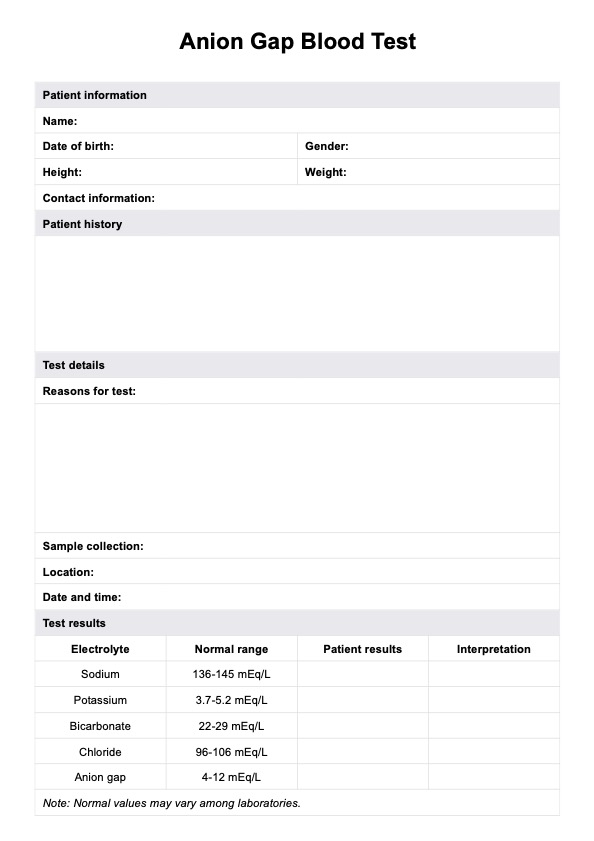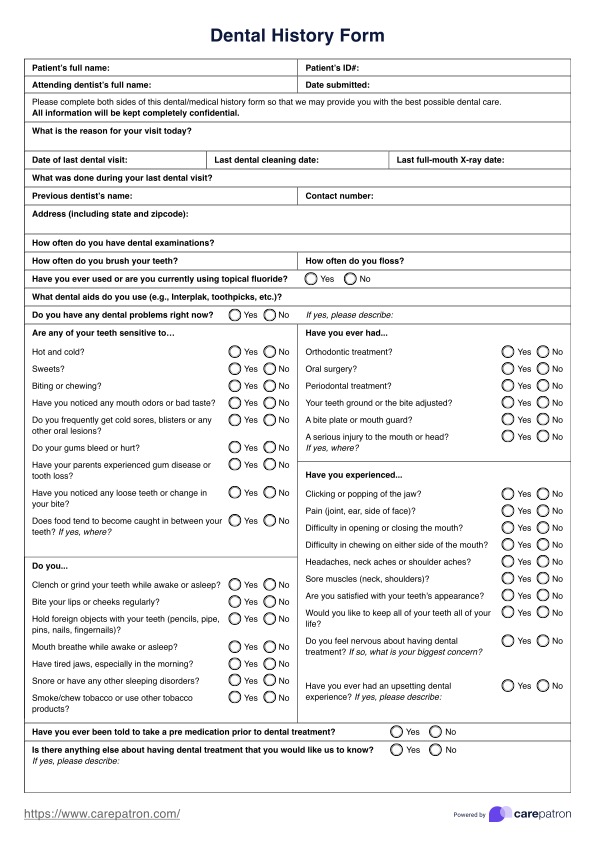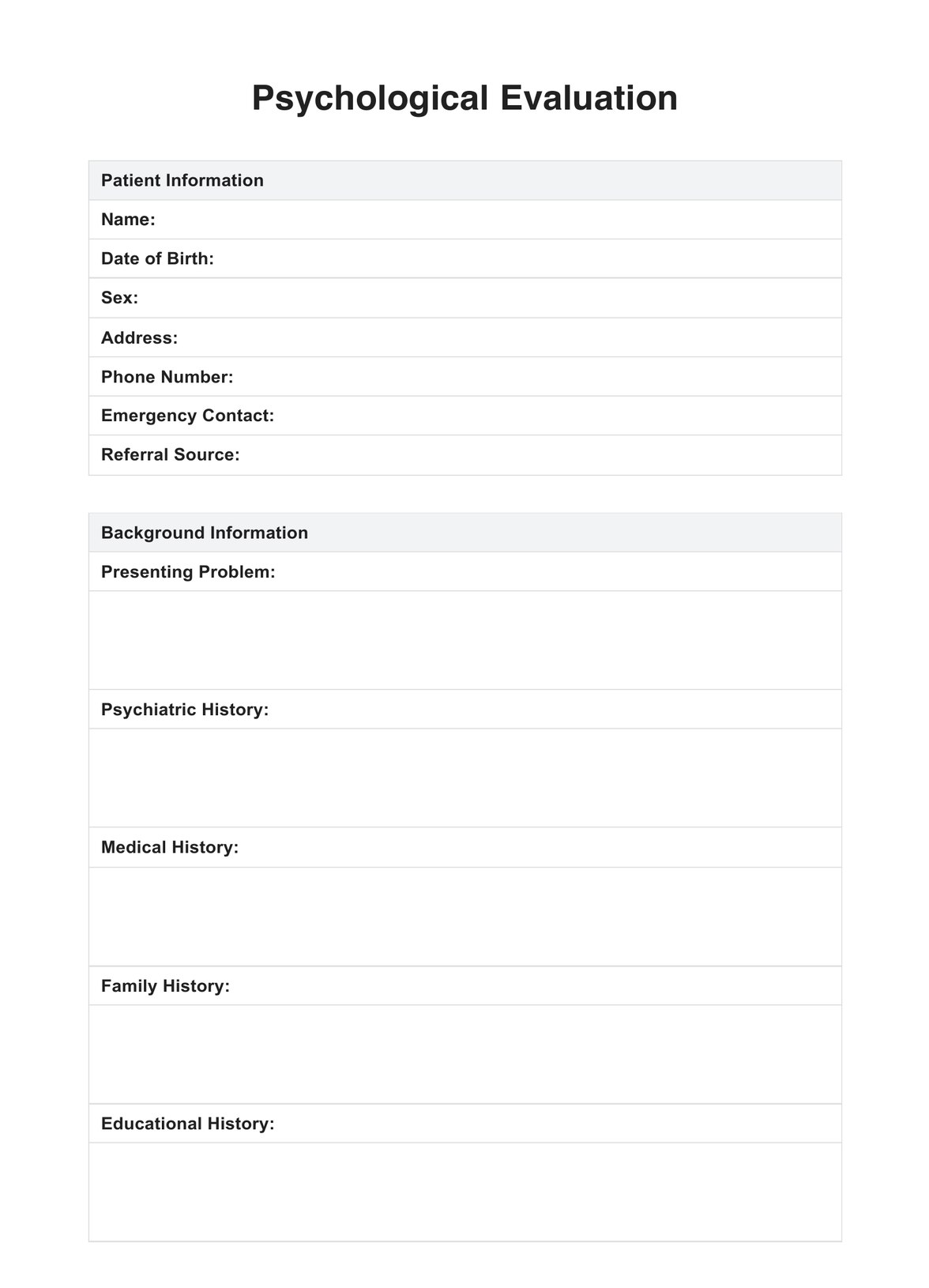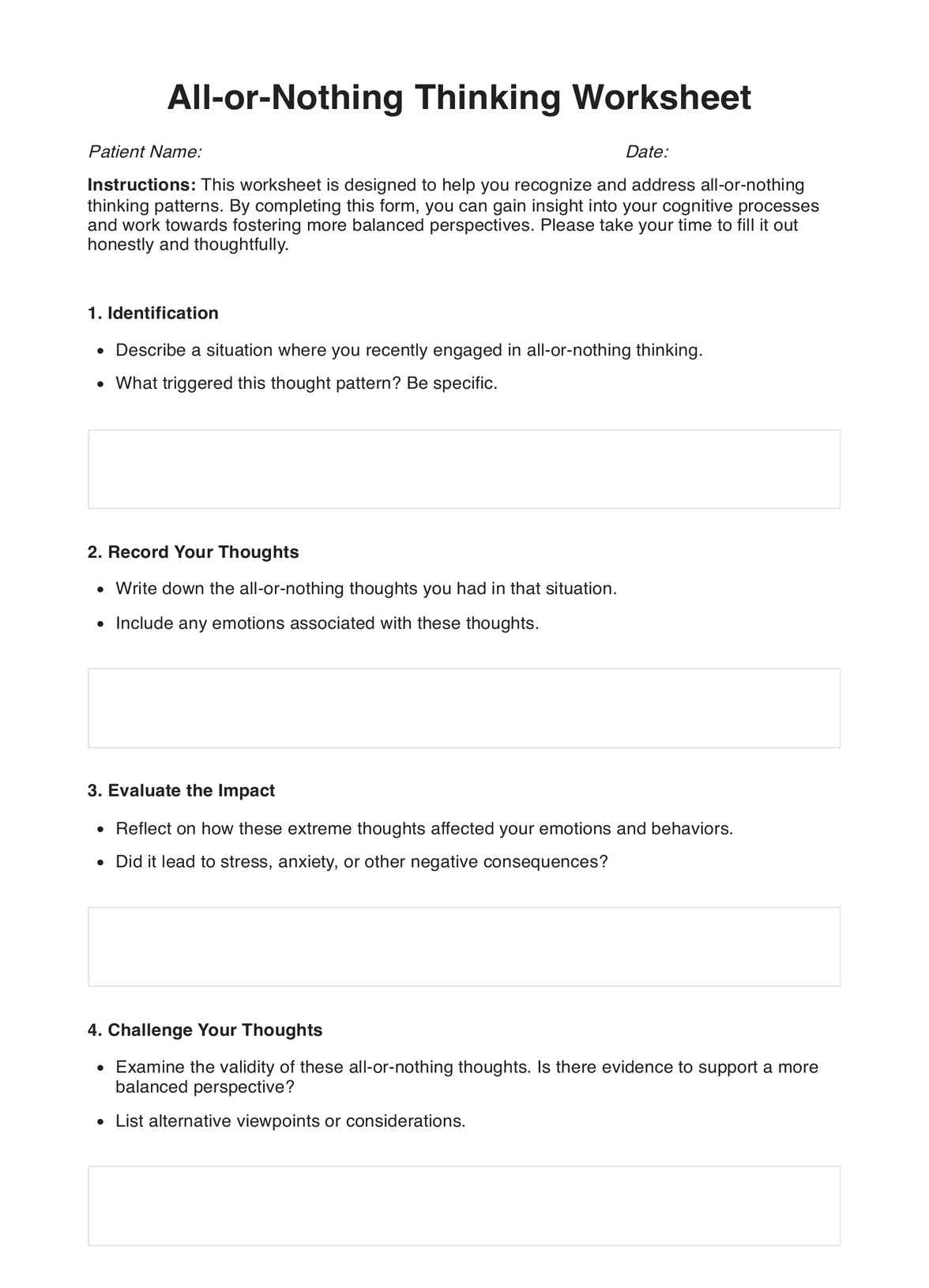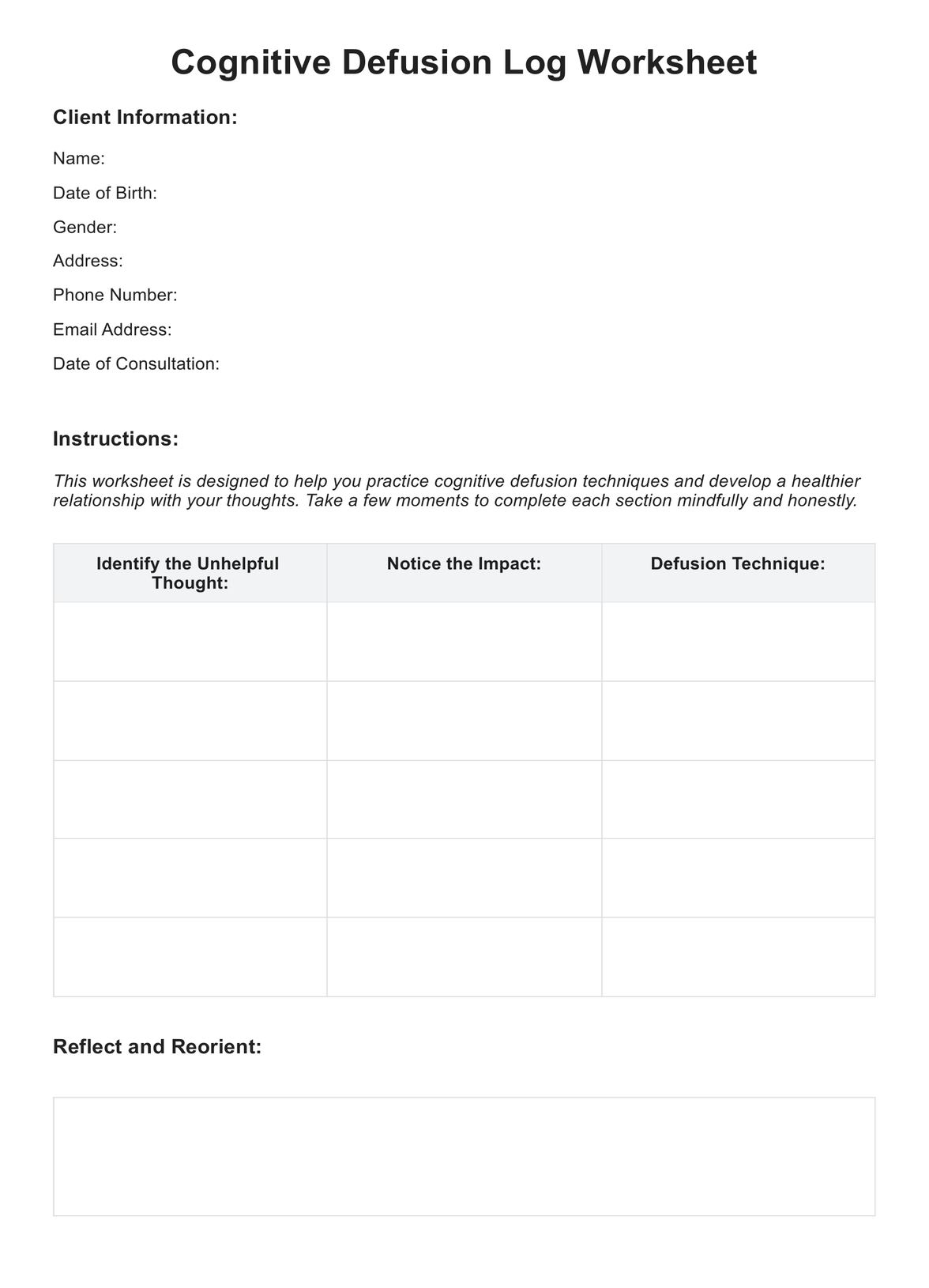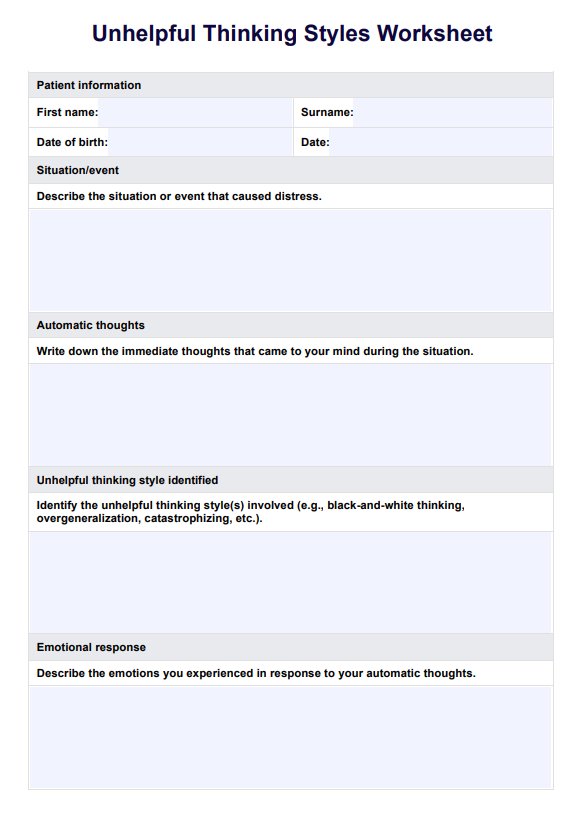Autism Spectrum Test
Looking to assess autism spectrum disorders? Discover the best tools and strategies for healthcare practitioners in our comprehensive guide. Read now!


What Is An Autism Spectrum Test?
As a healthcare practitioner, you may come across patients who show signs of autism spectrum disorder (ASD). Autism spectrum tests are designed to help healthcare professionals accurately diagnose this disorder. But what exactly is an autism spectrum test?
An is a series of assessments and evaluations used to determine whether an individual meets the diagnostic criteria for autism spectrum disorder. These tests may include behavioral observations, interviews with the individual and their family, and standardized rating scales or questionnaires.
Autism spectrum tests aim to identify whether an individual exhibits the hallmark features of ASD, such as difficulties with social communication and interaction, restricted interests, and repetitive behaviors. A proper diagnosis is crucial as it helps healthcare practitioners develop personalized care plans and interventions that cater to the unique needs of each individual.
While autism spectrum tests cannot provide a definitive diagnosis, they are essential for healthcare practitioners to evaluate the presence and severity of ASD symptoms. As a healthcare practitioner, staying informed about the latest assessments and tools available to support your patients is crucial.
Autism Spectrum Test Template
Autism Spectrum Test Example
How To Use This Autism Spectrum Test Template
As a healthcare practitioner, you understand the importance of accurately diagnosing and treating autism spectrum disorder (ASD). One of the essential tools for ASD assessment is the use of standardized autism spectrum tests. These tests provide reliable and objective measures of ASD symptoms and aid in making informed decisions about patient care.
At Carepatron, we offer a comprehensive preliminary autism spectrum test template that streamlines the assessment process and facilitates accurate diagnosis. Here's how you can use this template effectively:
Step 1: Obtain Informed Consent
Before administering the test, ensure that the patient and their guardian(s) understand its purpose and give informed consent to participate.
Step 2: Collect Patient Information
Record patient demographics, medical history, and developmental history, including any past ASD diagnoses.
Step 3: Administer Autism Spectrum Test
Administer the autism spectrum test, which is a series of questions or tasks that look at things like social communication, repetitive behaviors, and limited interests that can be signs of autism. For example, the Autism Diagnostic Observation Schedule (ADOS) or the Autism Diagnostic Interview-Revised (ADI-R) are two tools that can help you figure out if someone has ASD (ADI-R).
Step 4: Score the Test
Use the scoring guidelines provided by the validated diagnostic tool you used to compute the patient's total test score. You can also use diagnostic criteria from the DSM-5 or other diagnostic manuals to see if the person meets the criteria for an ASD diagnosis.
Step 5: Interpret Results
Interpret the test results in the context of the patient's history and clinical presentation, considering factors such as age, gender, and intellectual ability.
Step 6: Communicate Results
Communicate the results to the patient and their guardian(s) clearly and sensitively, providing further evaluation or treatment recommendations.
By following these steps, you can use the Carepatron autism spectrum test template to efficiently and accurately assess ASD symptoms in your patients.
Who Can Use This Printable Autism Spectrum Test (PDF)?
Autism spectrum disorder (ASD) is a complex developmental condition that affects a person's ability to communicate, interact with others, and engage in repetitive behaviors. The early diagnosis of ASD is essential for effective treatment and support, and this printable autism spectrum test (PDF) can be a helpful tool for assessing individuals who may have ASD.
The following individuals can use this printable test to help diagnose ASD:
- Pediatricians: Pediatricians play a crucial role in identifying the early signs of ASD in children. They can use this printable test to evaluate a child's communication skills, social interactions, and behavioral patterns.
- Psychiatrists: Psychiatrists working with children and adolescents can use these printable tests to assess ASD symptoms and diagnose the disorder. They can also use the test results to develop an appropriate treatment plan.
- Psychologists: Psychologists can use this printable test to diagnose ASD in adults. The test can help identify behavioral patterns and communication difficulties that may indicate ASD.
- Speech and language therapists: Speech and language therapists can use this printable test to evaluate communication skills in individuals suspected of having ASD. The test can help identify language delays, unusual speech patterns, and difficulty with social communication.
It is essential to note that this printable test should only be used by qualified healthcare professionals who have received appropriate training in diagnosing and treating ASD. The test should be administered as part of a comprehensive evaluation that includes a clinical interview and observations of the individual's behavior in various settings.
Why Is This Template Popular With Psychiatrists?
Assessing autism spectrum disorder (ASD) in patients is a complex process that requires careful evaluation and multiple assessments. Psychiatrists and other healthcare practitioners use various tools to gather data and make informed decisions about a patient's diagnosis and treatment plan. One of the most popular and effective templates psychiatrists use is the autism spectrum test.
Here are some reasons why psychiatrists widely use this template:
- Provides a comprehensive evaluation: Our autism spectrum test template assesses multiple areas of a patient's functioning, including communication, social interaction, and behavior. This thorough evaluation helps psychiatrists thoroughly understand a patient's symptoms and identify potential comorbidities.
- Evidence-based: The autism spectrum test template is based on empirical research. This evidence-based approach helps ensure accurate diagnoses and effective treatment plans.
- Helps track progress: By administering this autism spectrum test template at regular intervals, psychiatrists can track a patient's progress over time. This allows them to adjust treatment plans as needed and evaluate the effectiveness of interventions.
This autism spectrum test template is a popular instrument psychiatrists use to help diagnose ASD in patients. Its exhaustive assessment, evidence-based approach, and ability to track progress make it an invaluable resource for healthcare practitioners.

Benefits Of An Autism Spectrum Assessment Template
Consistency
An autism spectrum assessment template provides a standardized method for diagnosing ASD. This ensures that all patients are assessed using the same criteria, regardless of who is conducting the assessment. By using a consistent approach, healthcare practitioners can ensure patients receive the best possible care.
Patient-Friendly
An autism spectrum assessment template can be a patient-friendly tool. Patients and their caretakers can easily understand their diagnosis and their treatment options. Using a template, healthcare practitioners can clearly and explain the results to their patients clearly and simply.
Objective Evaluation
An autism spectrum assessment template objectively evaluates a patient's symptoms and behaviors, reducing potential bias in diagnosis and treatment.
Early Intervention
Early diagnosis and intervention are crucial for improving outcomes in ASD. An autism spectrum assessment template can help healthcare practitioners identify and intervene with patients at risk for ASD as early as possible, improving long-term patient outcomes.
Improving Outcomes
A body mass assessment template can improve patient outcomes in the long run. Healthcare practitioners can intervene early and prevent chronic disease onset by identifying at-risk patients. Using a template, healthcare practitioners can track progress and adjust treatment plans as needed, improving patient outcomes.
Commonly asked questions
Free autism spectrum test templates are assessment tools that help healthcare practitioners screen for ASD in individuals. These templates consist of questions designed to evaluate an individual's behavior, communication, and social interaction. Free templates are available on the Carepatron site and can be downloaded and printed.
Free autism spectrum test templates can help identify individuals who may have ASD, but they are not diagnostic tools. A qualified healthcare practitioner should only diagnose ASD after a comprehensive evaluation. Additionally, these free templates may not be as reliable as standardized tests trained professionals administer.
Healthcare practitioners can use free autism spectrum test templates as a screening tool to identify individuals who may have ASD. These templates can help practitioners decide if further evaluation is necessary. It is important to remember that these templates should not be the only method used to diagnose ASD, and healthcare practitioners should always exercise clinical judgment.


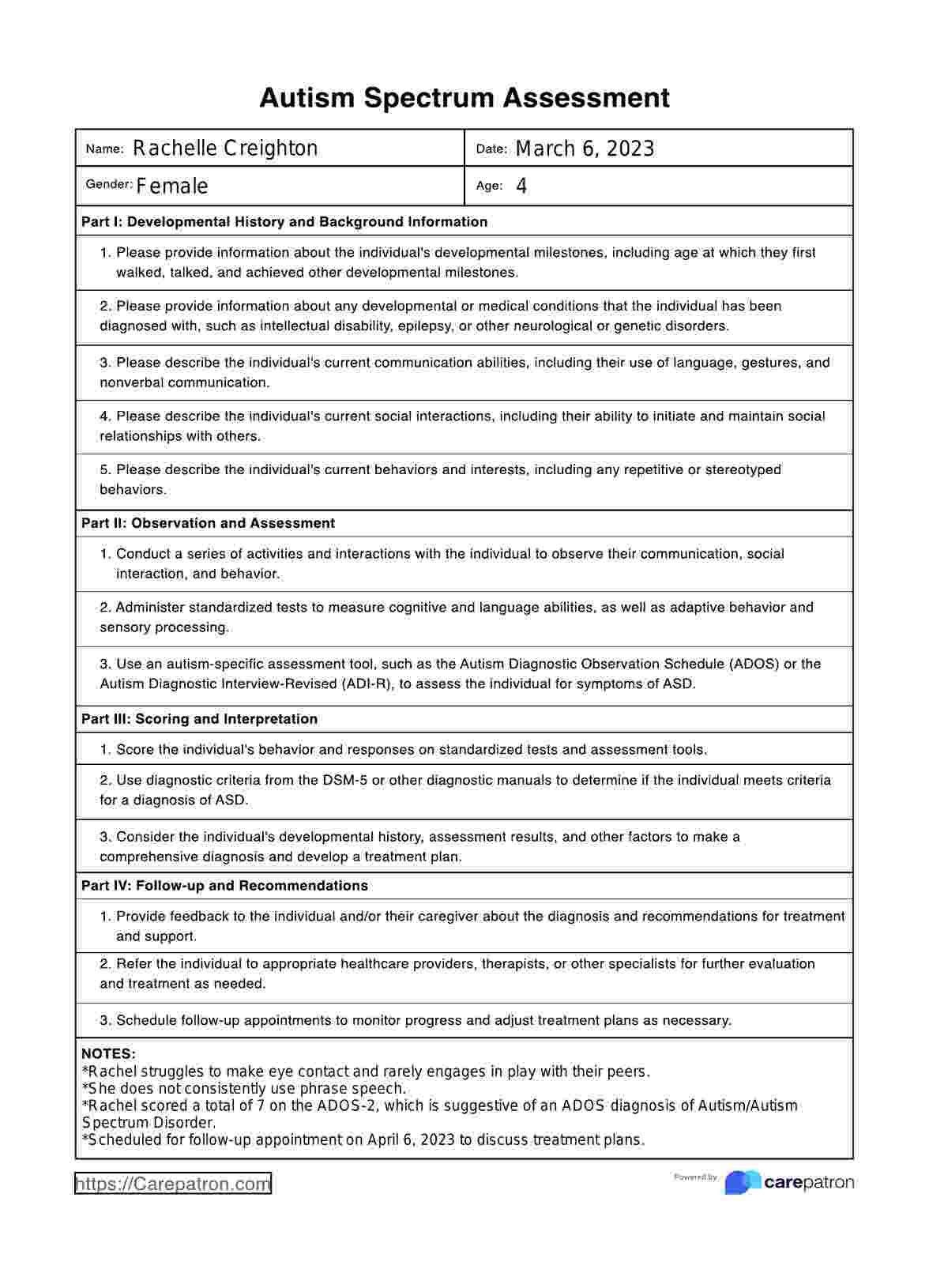
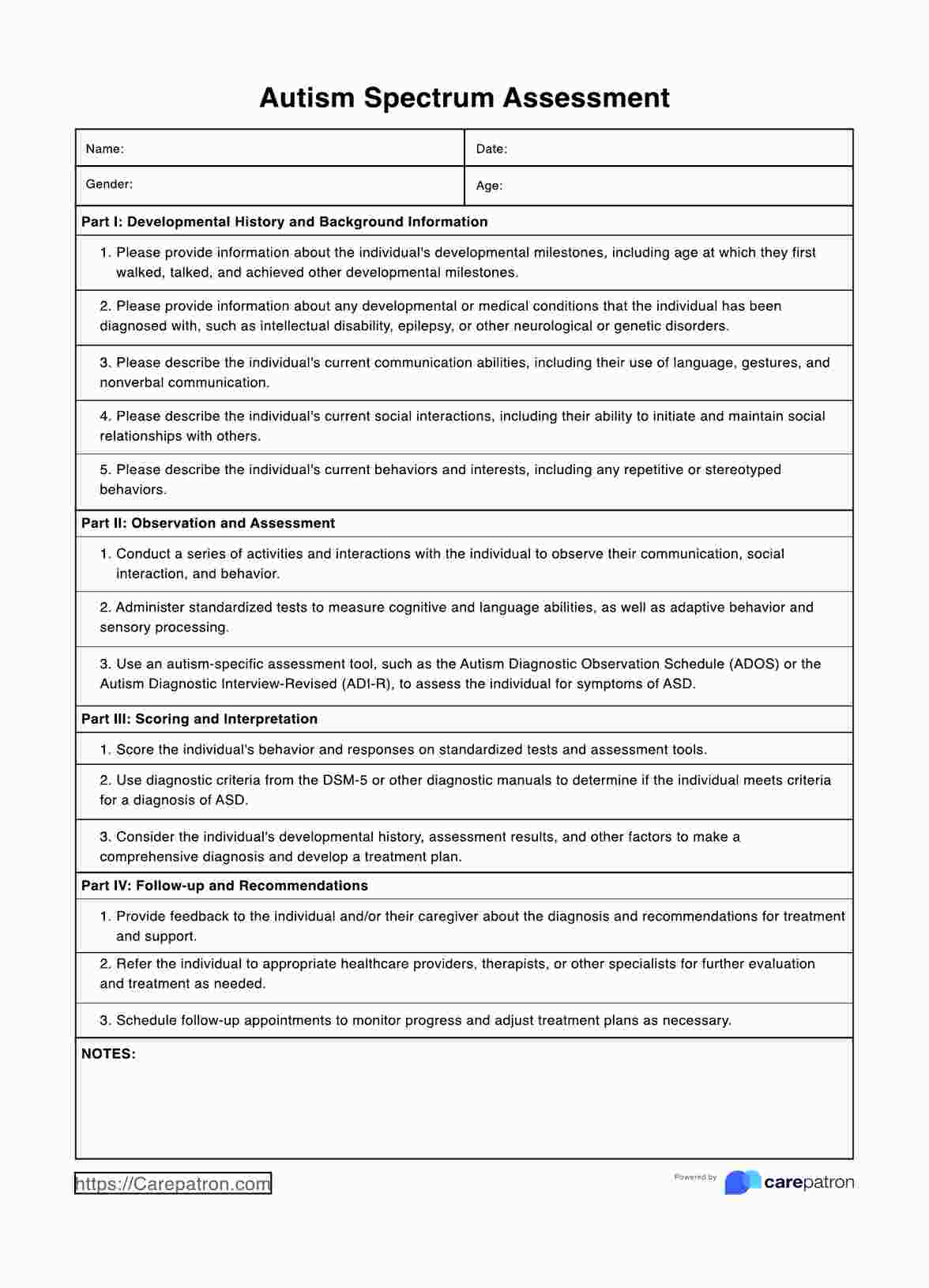

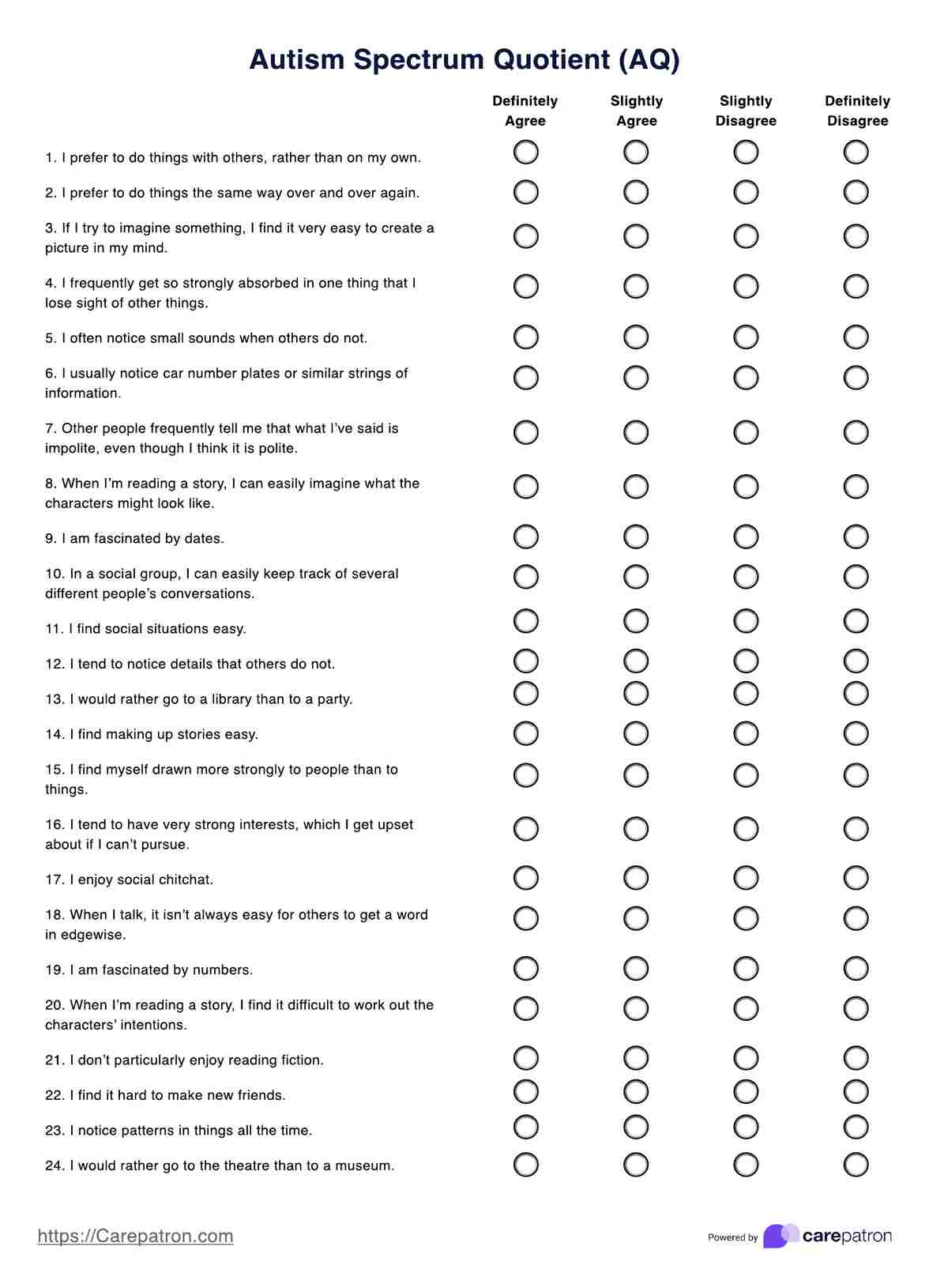
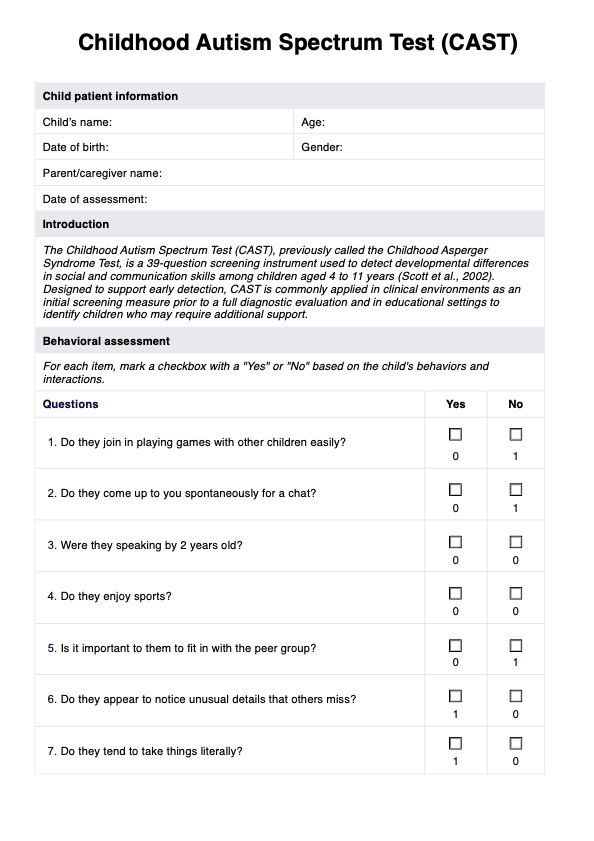












-template.jpg)























































































